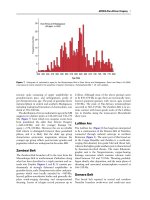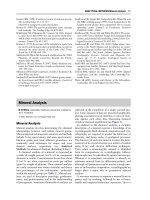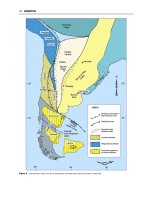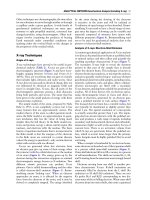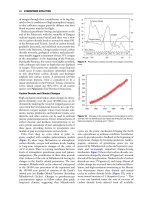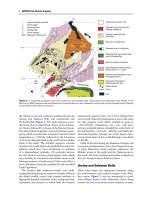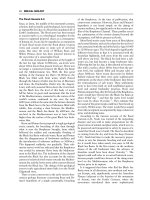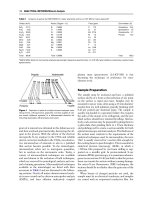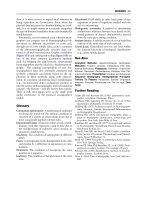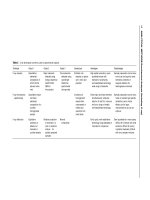Encyclopedia of geology, five volume set, volume 1 5 (encyclopedia of geology series) ( PDFDrive ) 1865
Bạn đang xem bản rút gọn của tài liệu. Xem và tải ngay bản đầy đủ của tài liệu tại đây (120.79 KB, 1 trang )
22 NORTH AMERICA/Continental Interior
Figure 1 Index map of North American physiographic provinces showing location of Interior Lowlands and Great Plains of
Continental Interior wedged in between the Appalachian Mountains on the east and the Rocky Mountains on the west. (From Kay
and Colbert (1965), John Wiley & Sons.)
This part of the Earth was relatively stable during
the next several hundred million years, and as the seas
advanced and retreated over the low relief surface,
they deposited fairly uniform marine sediments, layer
upon layer, over extensive areas. The type and distribution of the sediments responded to the global
change in sea-level as well as to changes in local
conditions. All of these events were recorded in the
sedimentary section, which, as the history unfolded,
was sprinkled liberally with long intervals of no
record. Because of the sensitivity to conditions in the
accumulation of sediments in this type of environment, much of the history is not chronicled; in
fact, it has been estimated that as much as 85% of
time in any one place is not represented by the rock
record. This situation is aptly described as layer-cake
geology.
The Foundation
The foundation is the craton, which was formed by
adding on (accretion of) material to the original
